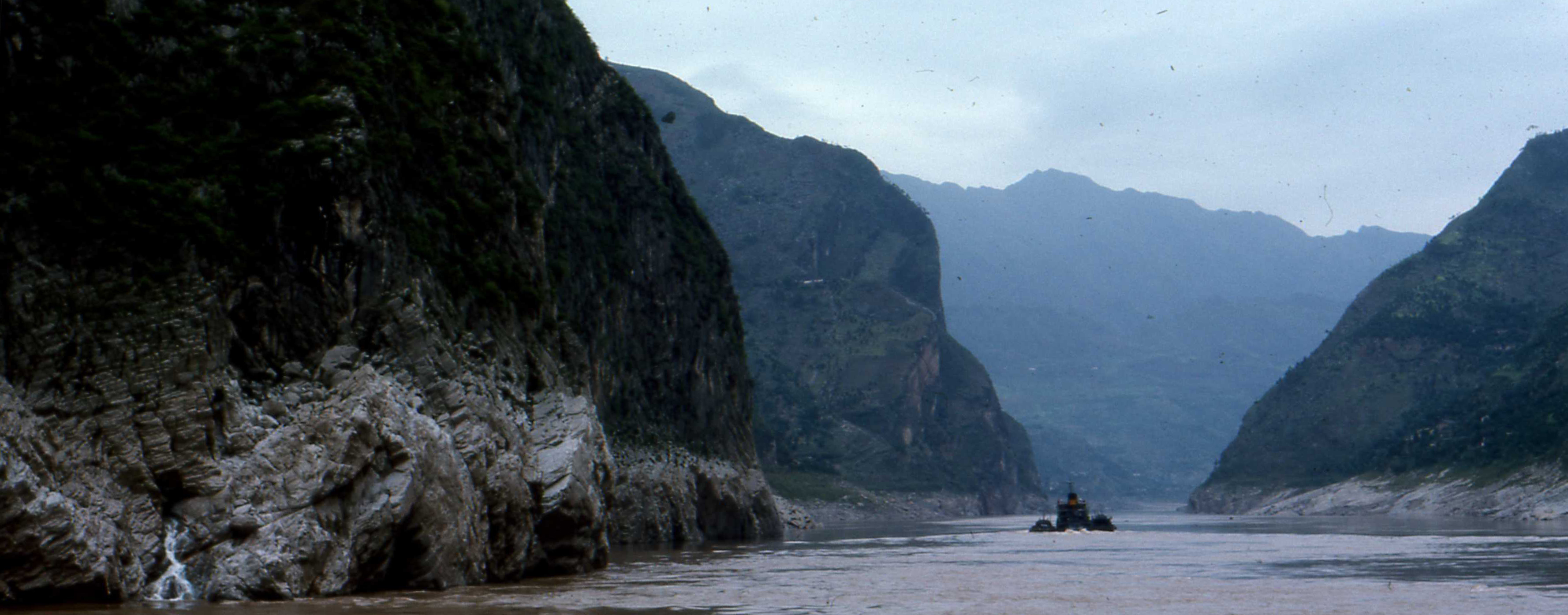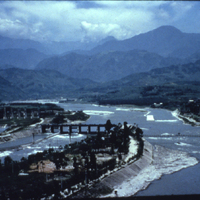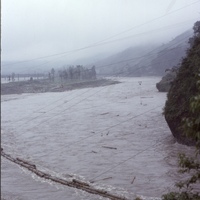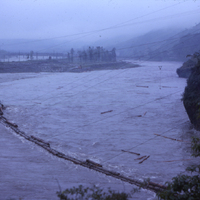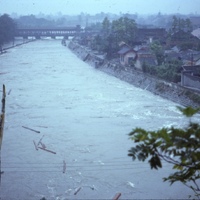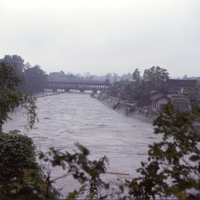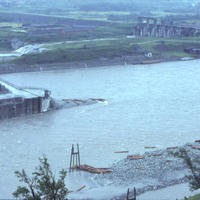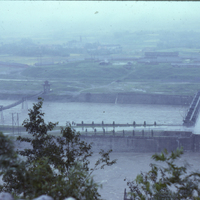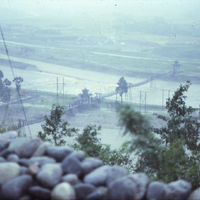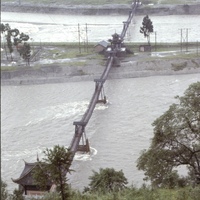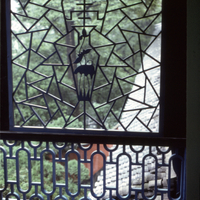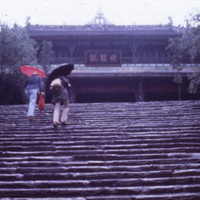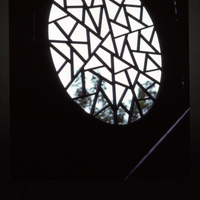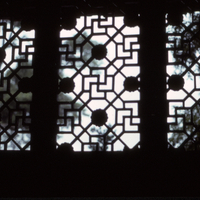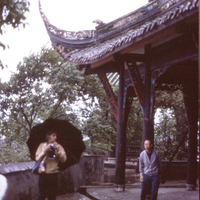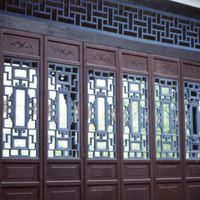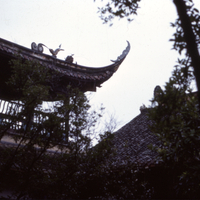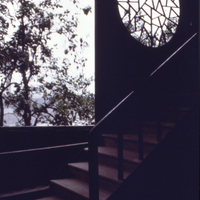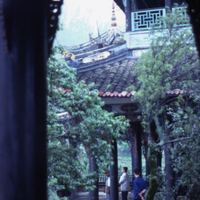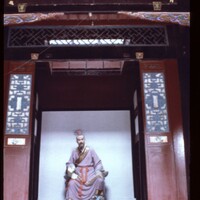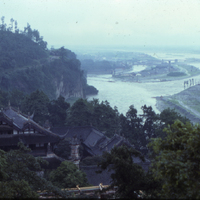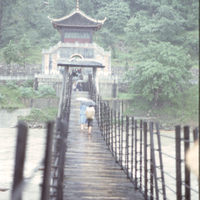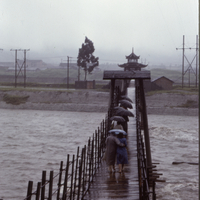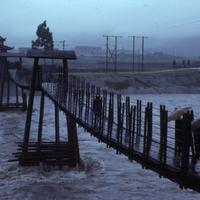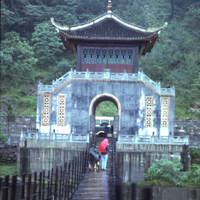1978 Canadian School Delegation - Dujiangyan Visit
Item
-
Title
-
1978 Canadian School Delegation - Dujiangyan Visit
-
Description
-
In 1978 a group of Canadian school in West China alumni visited China in a delegation led by Bill Small. One of the stops on the trip was at the famous Dujiangyan waterworks. The photographs in this series document the many changes to the waterworks system made by the Chinese government in the early 1970s, as well as the temple architecture and lattice work at Dujiangyan.
-
Commentary
-
The Dujiangyan waterworks were begun by the Qiang, Shu and Pi leaders at least 2,500 years ago (1). Over 2200 years ago, the Shu minister Kai Ming took the first step in developing the modern works by cutting through the rock cliff that now forms the Bottleneck water intake feature of the waterworks (2). In 316 BCE, during the Warring Kings era, Han Chinese began moving into the area after the Qin Kingdom conquered the Shu Kingdom. Li Bing was appointed as Qin governor of the region, and in this capacity, he energetically improved upon and expanded the work already begun on the waterworks, as well as founded the city of Chengdu (1).
The motivation of the Qin leaders was to control floods, manage irrigation throughout the Chengdu Plain, and create water transportation from Chengdu to the Yangtze River and thereby throughout China, and the rest of the world. Transportation was important for both commerce and military purposes. The abundance of food and improved transportation made possible by the waterworks enabled the Qin leaders to expand their empire by annexing Sichuan and other provinces into the foundation of the China we know today (3) (4).
The unique feature of these waterworks is that they control the water without a dam. They have been in continuous operation for over 2000 years. In 256 BCE, Li Bing created the Fishmouth artificial island to divide the water at a 40/60 ratio, depending on the time of year - flood or drought season. At the same time, he built the Flying Sand Spillway that allows excess water to drain into canals that irrigate the Chengdu Plain (3). The Bottleneck, Fishmouth and Flying Sand Spillway are the three main features that make this waterworks so effective, while utilizing only natural features of the landscape and employing Taoist principles of harmony with nature (1).
However, these waterworks have been destroyed four times by earthquakes, floods and wars. They have also been periodically expanded and improved upon. As China rushed to modernize in the 20th century, the 1970s saw one of the most invasive modification periods throughout the system’s history. These include the building of two concrete dam structures, one spanning the Outer River, a rebuilding of the Fishmouth water dividing feature, and a small new channel between the Flying Sand Spillway and the Bottleneck. We can also see the brand new Anlan chain bridge that spans both Inner and Outer Rivers. This replaced the bamboo cable bridge built in 1803 whose remains are evident in some of these photos (2).
Since January 2000, Dujiangyan has been maintained as a UNESCO World Heritage site. It is also protected and promoted for tourism under several Chinese state and provincial laws (4). In order to achieve the criteria of authenticity demanded by UNESCO many of the industrial operations of the 1970s have since been destroyed or downplayed. However, today rapidly increasing demands on water and energy flowing through Dujiangyan have put a strain on the system and created concerns among Chinese and global environmentalists. A massive dam up river a few miles has been blamed for the 2008 earthquake that destroyed the Er Wang Temple at Dujiangyan (5).
-
Event Date
-
1978-09
-
Provenance
-
Many of the color slides in this series were taken by Donald Earl Willmott and passed down to me, Cory Willmott. The originals are clearly marked and labeled by Dr. Willmott in a metal case containing all his slides from the 1978 delegation trip. The photograph of this case is the image icon for this Event record.
There appear to be two sets of slides which can be distinguished by their different coloration – one with grayish cast and the other bluish. This would seem to indicate different kinds of film in different cameras. However, it’s not clear why someone would take similar but not the same photos of the same scene with two different cameras. The bluish set of slides were in a different location and unmarked. Moreover, they were mixed in with slides taken by Donald’s father Earl Willmott on 1971 and 1975 delegations. This leaves us in a quandary as to why and by whom the bluish toned series were taken. Earl was not among the delegates in 1978. It is possible that I possess documentation for this trip somewhere in my father’s papers that I may turn up in due time.
-
References
-
(1) Peng, Bangben. 2008. Dujiangyan irrigation system: A case of East Asia local knowledge with universal significance. Frontiers of History in China 2008, 3(4): 533–550.
-
(2) Torrance, Thomas. 1919. The Origin of the Kwanhsien Waterworks. West China Missionary News 21(6): 20-21.
-
(3) Cao, Shuyou. 2010. Dujiangyan Irrigation System – a world cultural heritage corresponding to concepts of modern hydraulic science. Journal of Hydro-Environment Research 4(1): 3-13.
-
(4) Sichuan Dujiangyan Irrigation System Administration. 2018. Dujiangyan Irrigation System.
-
https://www.youtube.com/watch?v=DOeFPrOlYko&t=3s
-
(5) Disaster Update. 2024. July 24, 2024 - Dujiangyan City, China - Flash floods cause severe disruption and damage
-
https://www.youtube.com/watch?v=5lbVcmFnIg4
-
Type
-
Event
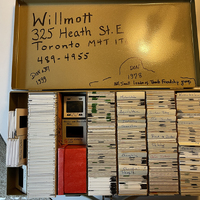 DEW_Slides_Interior.jpg
DEW_Slides_Interior.jpg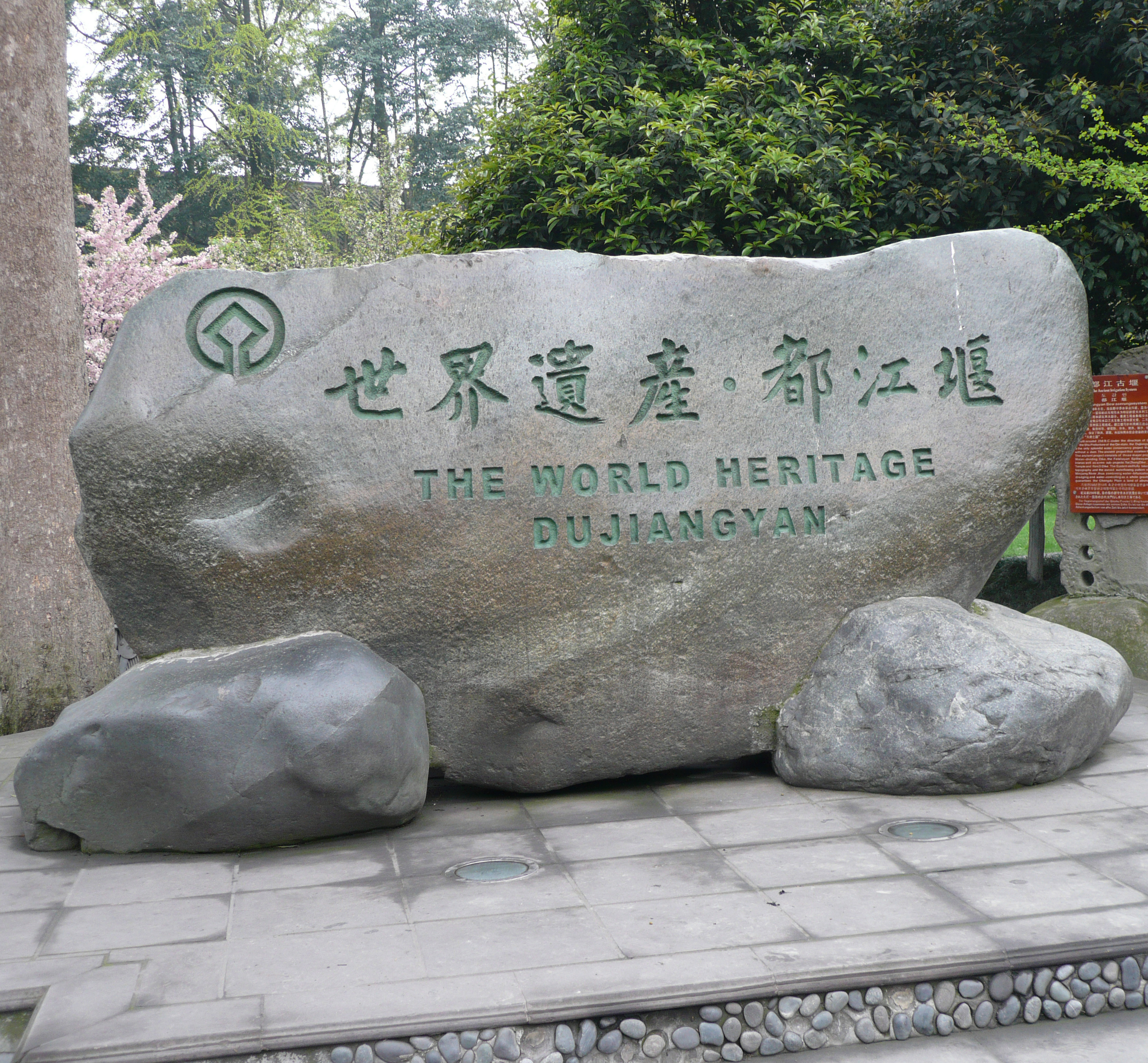 1944 Dujiangyan Opening of the Waters Ceremony
1944 Dujiangyan Opening of the Waters Ceremony